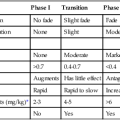Casinos are meticulously designed around mathematics. Game developers and casinos determine payout rates and odds to guarantee the house maintains an advantage. While luck plays a role, players can interpret the numbers behind the games at Just Casino to make informed gambling decisions. This guide will explore the probabilities and metrics for understanding the odds.
House Edge: The Casino’s Built-In Advantage
The house edge represents the mathematical advantage casinos hold over players. Also called the house advantage, this figure determines how much of each bet the casino keeps over time.
Every bet made has an expected return – the percentage of money retained after bets resolve. If a game returns 95% to players over time, the house edge is 5%. The higher the edge, the more likely the casino profits long-term.
House edges vary across games:
| Game | House Edge |
| Blackjack | 0.5% – 5% |
| Roulette | 2.7% (European) to 5.26% (American) |
| Slots | 2% – 15% |
| Craps | 1.4% (pass/come) to 16% (one roll bets) |
Understanding house edges provides an idea of potential profits and losses when gambling. Players should factor this against personal risk tolerances when budgeting bankrolls.
RTP: Predicting Slot Machine Payouts
The RTP (return to player) percentage offers insight into a slot machine’s payout over time. Expressed as 96% RTP, this expects a slot to payout $0.96 for every $1.00 wagered, losing $0.04 to the house edge.
RTPs help estimate potential payouts:
- 96% RTP: Expect 96c back per $1 bet over 1 million spins
- 80% RTP: Expect 80c back per $1 bet over 1 million spins
However, RTPs only provide averages – they cannot predict individual spin outcomes. A 96% RTP slot could pay nothing over 500 spins, or award a jackpot on the first spin. While unlikely, short-term possibilities deviate from long-term averages.
Standard Deviation: Volatility in Action
Casino games payout erratically by design. Standard deviation quantifies this volatility, expressing potential divergence from expected averages.
Think of volatility like this – low standard deviation translates to steadier, smaller payouts. High deviation brings bigger but more sporadic payouts, with longer dry spells between wins.
Here are sample standard deviations across casino games:
- Slots: 4 (low) to 50 (high)
- Blackjack: From 1.15 to 1.80
- Roulette: From 5.70 to 7.60
Standard deviations help players choose games aligned with personal preferences. Those wanting stability may prefer low deviation slots, while high deviation brings bigger but more erratic payouts.
Odds and Probabilities: The Statistics of Success
Table games also provide data to derive probabilities of specific outcomes. In blackjack, the probability of being dealt 21 from two cards is 4.83%. In roulette, odds can calculate the likelihood of betting groups hitting – for example, a 47.37% chance of red or black landing.
These probabilities allow quantifying risks behind choices:
- Hitting 16 in blackjack has a 62% chance of going bust
- Wagering single numbers in roulette expects a 2.63% payout rate
While the casino maintains its edge long-term, understanding the percentages behind in-game choices empowers smarter gambling and potentially mitigate losses.
Conclusion: Interpreting the Numbers
While nothing guarantees success in gambling, players can make informed decisions by studying the math behind the games. Interpreting probabilities, house edges, and volatility measures help quantify risk and potential rewards. Those numbers reveal the statistical realities behind the games that no amount of luck can overcome long-term. While casinos configure the odds in their favor, knowing them provides the best opportunity to walk away a winner.




